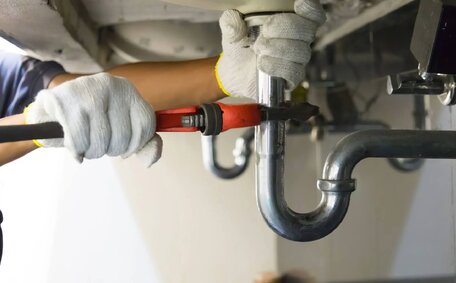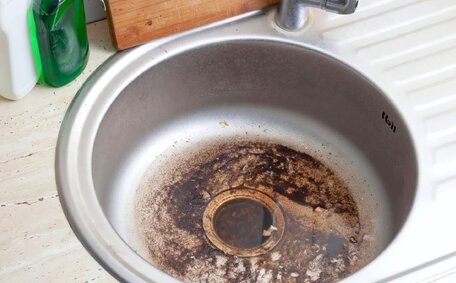Comparing the Chemical Composition
Exploring the chemical composition of natural gas and propane uncovers their core differences. Natural gas consists primarily of methane and contains smaller amounts of other hydrocarbons like ethane, propane, and butane. It is formed from buried organic material subjected to intense heat and pressure underground over millions of years.
Conversely, propane is a byproduct of natural gas processing and crude oil refining. While compounds like propane and butane occur naturally in some natural gas reservoirs, most of the propane used commercially comes from separating it out during purification of natural gas or fractional distillation of crude oil.
Both gases are colourless and odourless in their natural states.
Distinctive odours are added to both gases for safety, aiding in early leak detection before dangerous concentrations occur. The stench helps alert people to the presence of gas long before it reaches concentrations that could ignite or cause an explosion.
Despite chemical similarities, natural gas and propane are differentiated by their distinct sourcing and extraction processes. Odorants are added to both fuels to aid in leak detection, thereby safeguarding households and businesses.
Energy Efficiency and BTU Output
Considering BTU output is essential when comparing the energy efficiency of natural gas and propane. BTU stands for British Thermal Unit and measures the amount of heat energy required to raise the temperature of one pound of water by one degree Fahrenheit.
In terms of BTU output, propane packs a more powerful punch than natural gas. For a given volume, propane generates around 2,500 BTUs compared to natural gas’s approximated 1,000 BTUs, showcasing its superior energy capacity. Propane’s higher BTU output per volume makes it more space-efficient for storage.
What does this mean in practical terms? For domestic tasks such as heating cooking or warming your home, you’ll consume less propane to achieve the same amount energy output. Propane provides greater energy per unit, crucial when storage capacity is limited.
On the other hand, considering that using natural gas pipelines means fuel is delivered directly to homes and businesses, considerations around storage volume diminish. The trade-off with piped natural gas is usually cost - it’s often less expensive than bottled propane per BTU, even when estimating the cost in cubic meters.
Both fuels are capable of efficiently powering stoves, water heaters, and space heaters. Propane’s higher BTU output per cubic foot, however, makes it ideal for scenarios requiring compact fuel storage, such as mobile homes and remote worksites.
Cost Considerations
When weighing up natural gas versus propane, cost is a key factor influencing which fuel makes better economic sense for your specific needs.
For new installations, natural gas typically has lower setup expenses. Connecting to existing gas utility pipelines eliminates the need for bottled tanks and home refuelling infrastructure. However, propane setup costs can vary widely based on components like tank purchase/rental, piping, regulators, and permits.
Operating costs also differ substantially.
Propane’s higher energy density means you burn less fuel to achieve the same heat level.
Ongoing maintenance costs should also be considered. Natural gas appliances often have longer lifespans than propane ones. Natural gas infrastructure removes the need for ongoing expenses such as refills or delivery fees.
Deciding between the two fuels involves balancing upfront installation costs against long-term energy and maintenance expenses. Checking fuel rates locally and appliance compatibility are also wise. Making an informed decision helps ensure the most affordable and practical home energy solution.
Environmental Impact
When comparing the environmental impact of natural gas versus propane, propane has a clear advantage. Propane is considered eco-friendly as its production doesn’t entail direct greenhouse gas emissions.
Unlike directly harnessing deposits of natural gas, separating propane during processing uses gas that would have been drilled regardless. Propane combustion releases negligible particulates and toxic gases such as sulphur dioxide. Propane systems help maintain air quality due to their clean combustion.
In terms of safety, the fact that propane is a gas nonrenewable makes it such that small volume releases won’t harm the atmosphere. Natural gas leaks accelerate global warming as methane has an over 25 times higher heat-trapping potential than carbon dioxide. Nonetheless, any substantial uncontrolled release of either gas poses an explosion risk.
Propane strikes a balance in sustainable energy by reutilising byproducts effectively. It makes productive use of byproduct fuels, doesn’t dirty the air, and avoids pumping more climate-impacting greenhouse gases into the ecosystem. Choosing propane over directly sourced natural gas thus helps shrink the carbon footprint of heating, cooking and running household/business appliances.
Storage and Delivery Methods
Storage and delivery methods for natural gas CNG and propane are quite distinct. Compressed natural gas (CNG) is distributed through a vast network of underground pipelines directly to homes and businesses.
Propane, on the other hand, can be stored onsite in pressurised tanks, and is delivered by truck to locations not connected to gas lines.
The piped infrastructure of natural gas translates into users not having to budget for storage capacity, indicating that this gas can provide convenience without the need for tank rentals/purchases, or establishing refilling schedules. Propane storage requires planning to ensure tank capacity meets seasonal demand. Insufficient tank space means running out of gas mid-winter.
Propane users should arrange refills before tanks drop below 30% to prevent running out of fuel. And specialised vehicles are required to pump pressurised liquid propane into these holding tanks onsite. Natural gas flows continuously to customers without needing local storage tanks or periodic refuelling.
When it comes to geographic access, natural gas piping isn’t available everywhere, especially remote locales. Propane’s portability allows it to meet needs where piped infrastructure is lacking. So propane suits off-grid applications like rural homes, mobile homes or construction worksites.
In summary, piped natural gas offers a consistent supply to connected properties. Propane, however, requires monitoring fuel levels and arranging deliveries but is accessible wherever deliveries are possible. These storage and transport factors help determine the best gas to power homes and worksites beyond the pipelines.
Safety and Leak Prevention
When using any gas fuel, safety should always be the top priority. Both natural gas and propane pipelines and storage tanks incorporate special safety features and leak prevention systems.
Being odourless, colourless gases, additives called odorants are mixed in so that gas leaks can be more readily detected by smell. A common odorant used is ethyl mercaptan which has a potent ‘rotten egg’ scent. If this smell is noticed, immediate action should be taken.
Propane tank sniffer ports enable emergency responders to detect leaks with gas sensors. Tanks also utilise pressure relief valves to vent excess gas rather than rupturing from over-pressurisation.
Indoor gas appliances like water heaters and stovetops should have individual shut-off valves installed. These allow fuel flow to be stopped in emergency situations. Annual inspections by qualified gas fitters also help verify equipment safety.
CNG distribution pipelines undergo rigorous testing and employ corrosion protection measures like cathodic protection. Gas network emergency hotlines facilitate swift response to gas odours or pipe damage by contractors.
Safe use of natural gas and propane for household energy needs hinges on knowledge of the risks, safety practices, and professional installation and maintenance.
Choosing Between Fuels for Your Home
When deciding whether natural gas or propane is the optimal fuel for your household needs, there are several key factors to weigh up.
From a cost perspective, natural gas usually offers lower prices under standard residential rates. Nonetheless, the difference between propane and natural gas systems becomes evident when considering the upfront connection costs for new gas line installations.
Propane offers superior energy efficiency per cubic foot burned, meaning less actual fuel volume is consumed for equivalent heat or cooking energy. This can help offset potentially higher propane unit prices.
Convenience also plays a role in fuel selection. Natural gas pipelines deliver continuous supply without the need to schedule awkward refilling appointments. However, propane’s portability enables off-grid access, reaching locations via road deliveries.
Propane systems offer self-reliance during storms or outages, allowing for uninterrupted heating and cooking.
The compatibility of appliances with the chosen fuel is crucial. Natural gas stovetops, ovens and ducted heating tend to be widely available. But for portable space heaters or outdoor equipment, the flexibility of propane tanks is hard to overlook.
Weighing practical considerations like costs, efficiency, and resilience lets you choose the better fuel fit for your home.
Transitioning Between Fuels
Switching between natural gas and propane as your home’s primary fuel comes with some important considerations. While both can effectively power appliances and fixtures, each system has distinct infrastructure, safety protocols and costs.
Those looking to exchange a natural gas solution for propane-fuelled features (or vice versa) have several steps to take for a smooth transition:
- Confirm appliance compatibility. Many stovetops, ovens, furnaces and water heaters need custom capability for either natural gas or propane.
- Review local code compliance. Permits, tank locations and conversion kits may be needed to satisfy legal requirements.
- Assess delivery logistics. Will new fills or line connections be reliable during peak periods?
- Budget for all expenses. From system inspections to appliance swaps, fuel rate changes and more.
- Hire qualified professionals. Undertaking gas-related DIY risks dangerous errors or leaks.
Switching household fuel from natural gas to propane is feasible, but enlisting licenced professionals is strongly recommended.Trying to cut corners risks compliance issues, unexpected costs or compromised safety. With some due diligence and expert help,seamlessly switching fuels is quite achievable.






